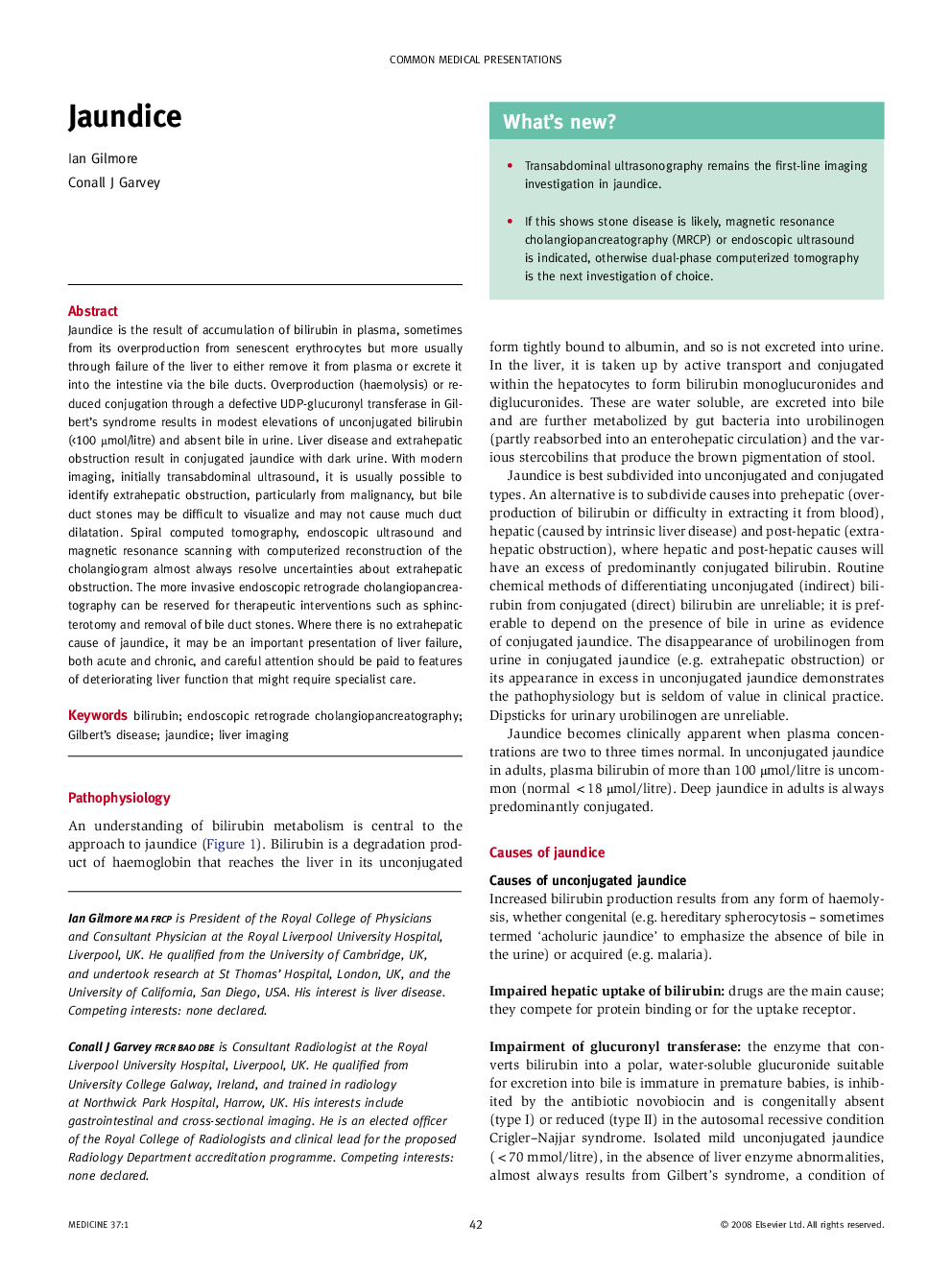| Article ID | Journal | Published Year | Pages | File Type |
|---|---|---|---|---|
| 3805484 | Medicine | 2009 | 5 Pages |
Jaundice is the result of accumulation of bilirubin in plasma, sometimes from its overproduction from senescent erythrocytes but more usually through failure of the liver to either remove it from plasma or excrete it into the intestine via the bile ducts. Overproduction (haemolysis) or reduced conjugation through a defective UDP-glucuronyl transferase in Gilbert’s syndrome results in modest elevations of unconjugated bilirubin (<100 μmol/litre) and absent bile in urine. Liver disease and extrahepatic obstruction result in conjugated jaundice with dark urine. With modern imaging, initially transabdominal ultrasound, it is usually possible to identify extrahepatic obstruction, particularly from malignancy, but bile duct stones may be difficult to visualize and may not cause much duct dilatation. Spiral computed tomography, endoscopic ultrasound and magnetic resonance scanning with computerized reconstruction of the cholangiogram almost always resolve uncertainties about extrahepatic obstruction. The more invasive endoscopic retrograde cholangiopancreatography can be reserved for therapeutic interventions such as sphincterotomy and removal of bile duct stones. Where there is no extrahepatic cause of jaundice, it may be an important presentation of liver failure, both acute and chronic, and careful attention should be paid to features of deteriorating liver function that might require specialist care.
